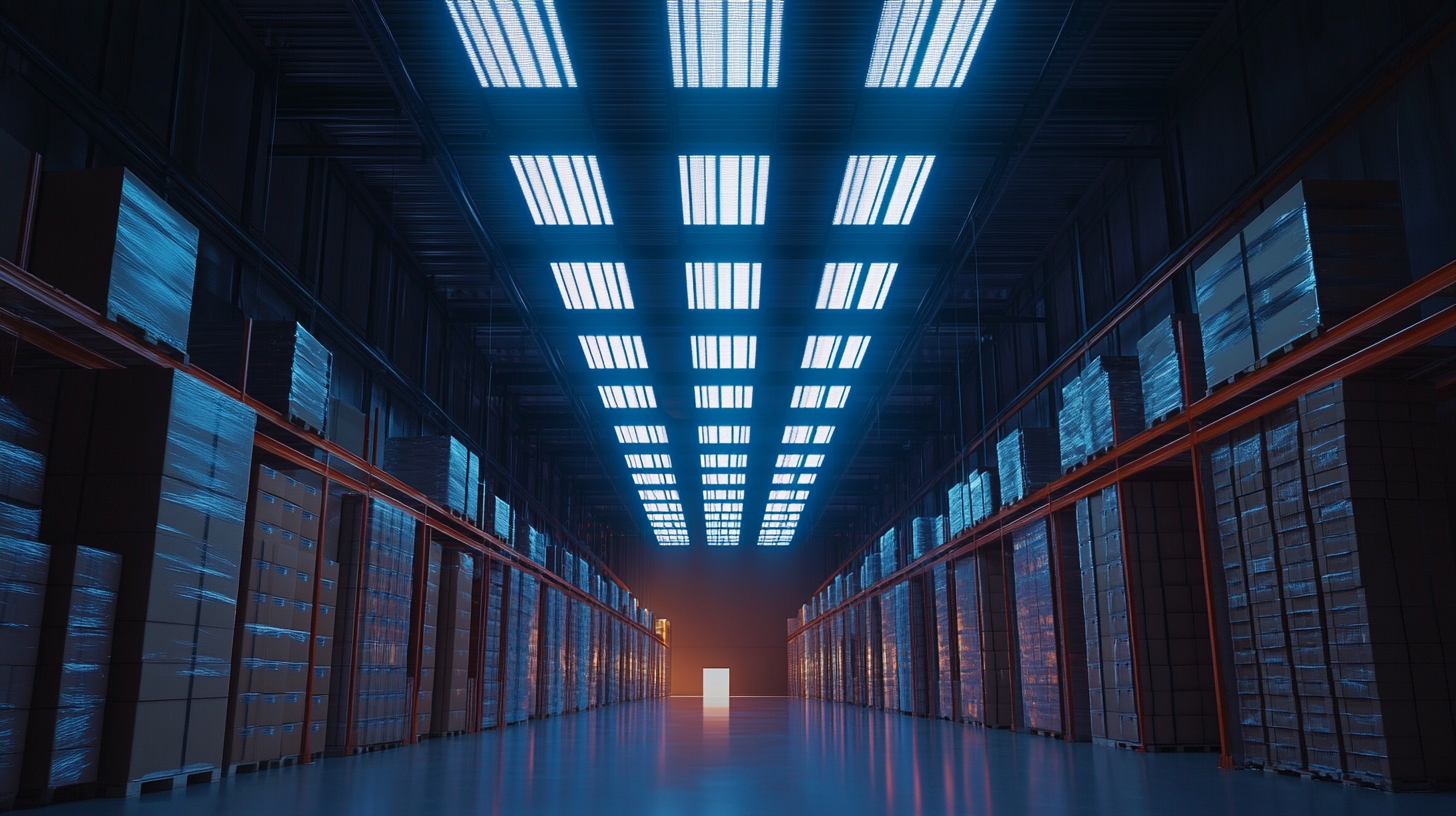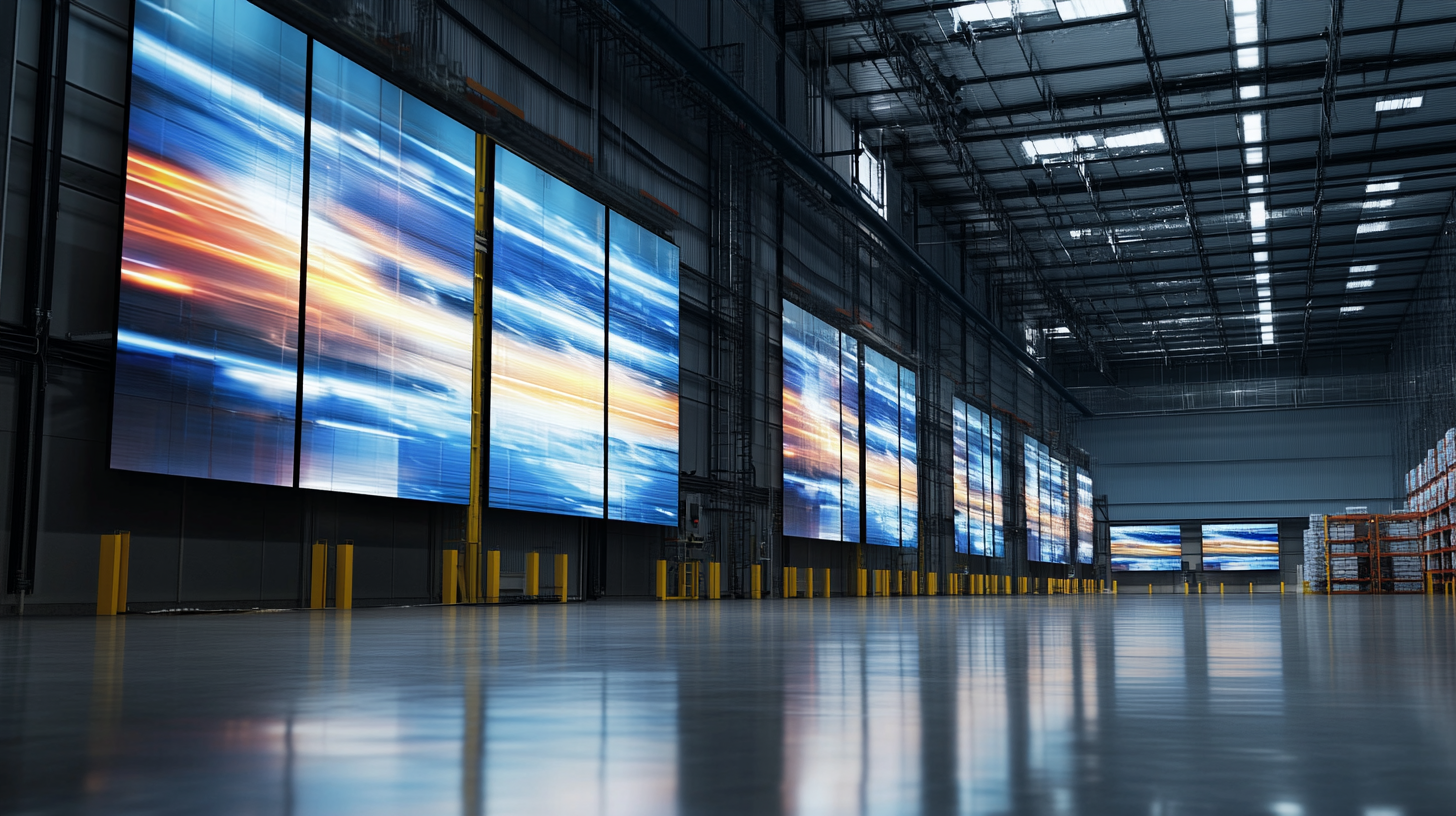Innovative Light Panels with 7 Key Features Revolutionizing Global Supply Chains
The evolutions in the supply chain arena of the whole world have come according to the emerging technologies over the past few years. Among the innovations that are rapidly creating a niche in enhancing the performance and transparency of logistics and warehousing operations are such things as Light Panels. These exceptional panels not only provide efficient lighting but also real-time data display and visibility, thereby streamlining processes and improving decision-making across industry lines.
Light Panels, therefore, revolutionizing customized management for supply chains, is in design, unique features, and functionality. This blog will highlight the seven elements of Light Panels that are making new standards in inventory management, safety, and integration with smart technologies. Discovering the potential of these Light Panels will be paramount as the organizations try to master the ever-complex modern logistic networks. Stay with us as we explore how these innovative tools had been engineered to benefit global supply chains for the better.

Key Feature 1: Enhancing Visibility and Tracking with Real-Time Light Panel Technology
Alas, visibility and tracking have become unavoidable themes that define the effectiveness and cost savings of modern global supply chains. Real-time data input which drives decision-making improvement is what relieves real-time light panel technology. Advanced tracking systems have been projected to grow at a compound annual growth rate (CAGR) of 24.7% from 2021 to 2028 in supply chains according to Grand View Research. This capture has been derived for the most parts from the demand for improved operational transparency, where light panels are an integral part. This virtualization of instantaneous light panels gives instant data on the status of goods in transit to logistics managers so that they can make real-time decisions based on the existing conditions. A study by Gartner shows that companies recording real-time visibility in their supply chains can save stakeholder costs up to 15%. With light panels that communicate visually all data flow about the delivery locations of shipments, delays, or possible disruption, businesses may preemptively address rather than reactively. This light panel also sweetens the collaboration among different stakeholders in the supply chain. Improved visibility allows better communications between suppliers, manufacturers, and retailers, considerably reducing delays. According to McKinsey, organizations that used visibility tools have realized up to 30% improvement in their metrics of supply chain performance. That is where the power of new light panel technology comes in for companies: it can help them optimize their operations and build a resilient supply chain framework.

Key Feature 2: Integrating IoT for Seamless Communication in Supply Chains
Integration of the technology of Internet of Things (IoT) into supply chain management is changing logistics and operation, allowing real-time communication between devices and stakeholders. McKinsey reports that increased visibility and refined processes are expected to improve supply chain efficiency by as much as 30%. The new light panels act as smart nodes, providing the backbone of this revolution, facilitating instantaneous data exchange across the supply chain network.
By connecting multiple devices and systems, the panels enable a new level of communication previously unattainable through classic supply chain frameworks. For example, IoT-based visibility solutions provide accurate tracking of inventory levels and location, thereby alleviating stockouts or overstock-related events. In a study by Gartner, it was reported that organizations using IoT in their supply chains would cut operational expenses by 25%, thereby illustrating the considerable cost benefits derived from immediate connectivity and data analysis.
Furthermore, the IoT plus innovative light panel set Measures provide insights that supply chain managers can leverage to make informed decisions. They can relay information on conditions of products or delays in transportation or possible disruptions that align the respective stakeholders. An industry analysis from BiP Solutions confirms that companies engaged with IoT in supply chain management expect improvement in customer satisfaction by 20% from more responsive and agile performance. This implies that the IoT in supply chain integration is not merely a technological improvement; it is a paradigm shift toward an intelligent and interconnected supply chain ecosystem.

Key Feature 3: Reducing Operational Costs through Energy-Efficient Light Panels
Lately, energy efficiency has become one of the major challenges of global supply chains that companies must address in order to reduce the costs of their operations. It has inspired the development of cutting-edge light panels for innovative solutions aimed at reducing energy use. According to a recent report by the International Energy Agency (IEA), lighting forms almost 19% of global electricity consumption; thus lighting could become the target for cost-saving innovations. For instance, switching to energy-efficient panels for lighting would result in huge reductions in energy costs, even as sustainability goals become sharper and more realistic.
One of their most important features is the long operating life and the reduced need for maintenance. Most conventional lighting systems within industries have to replace frequently, incurring extra costs and disruption of operations. Modern energy-efficient panels can last more than 25 times longer than standard bulbs. According to the Department of Energy, businesses can expect to realize savings from a decrease of up to 75 percent in the energy consumption for lighting when they switch to LED and similar technologies. These translate into major savings that could improve the budget process in the supply chain sector.
Furthermore, savings in operations can also be realized through the introduction of smart lighting. These systems will adjust lights accordingly to the real-time data collected from occupancy and natural light conditions to reach the maximum energy-efficient use within the day. According to McKinsey, it is estimated that smart building technologies, inclusive of intelligent lighting, can save about 20-30% in energy consumption. This makes it strategic since such a move will drive the overall operational cost down and enhance efficiency as it ranges towards the broader horizons within which warehouses and centers operate, where lighting is so necessary for productivity.

Key Feature 4: Minimizing Downtime with Adaptive Lighting Solutions
The adaptive lighting solution is found to be influencing the transformation of supply chains the world over in this time of efficiency and sustainability. For instance, in Canberra, streetlights were dimmed by 50%, on average, through an adaptive lighting scheme, which led to a 25% reduction in light pollution overall. This shows that through proper dimming, one can achieve environmental friendliness while at the same time securing sufficient visibility at night. Such innovations save energy, but at the same time, they are in line with the smart city concept to ameliorate the quality of life in urban areas.
Adaptive lighting technology heralds flexible systems that respond to real-time conditions. Continuous operation and flexible modes benefit business managers in providing a safer and productive environment in which to work. Such flexibility in implementation is vitally important for supply chain management, where every moment of lesser downtime directly translates into cost savings and enhanced productivity. With the global lighting control industry projected to ramp up investment rapidly, the investments in adaptive solutions must increase even more in order to remain competitive.
The process of urban growth will see increased pressure on technology for sustainable urban development. Adaptive lighting is at the forefront of this movement, promising a proactive approach for the management of urban infrastructure while enhancing livability. Hence, adaptive lighting will assist in filtering innovative practices that are friendly to both the environment and the economy.
Key Feature 5: Supporting Sustainability Initiatives in Global Supply Chain Management
Innovative light panel integration in global supply chains focuses on visibility and efficiency but has powerful implications for sustainability programs. Key Feature 5 addresses the reference to lighting solutions with environmentally sound practices toward greening supply chain management. Traditional lighting systems can consume tremendous energy, thereby increasing the carbon footprint of logistics and warehousing operations. Energy-efficient modern light panels, in contrast, are designed to reduce electricity usage dramatically, thereby minimizing greenhouse gas emissions.
These light panels also enhance sustainability by fostering smart inventory practices. Better visibility and optimized lighting ensure reduced wastage by allowing companies to effectively store and remove their products. Additional illumination allows for better monitoring of conditions of products, which means the perishable items can be managed better to reduce spoilage. By decreasing energy needs on the one hand and enhancing efficiency on the other, light panels enhance environmental sustainability as well as economically contribute to the overall profitability of any business.
Innovative light panels, in addition to saving energy, are made with a more sustainable and recyclable composition. This is in line with societal demands for corporate social responsibility along the supply chain, as companies become answerable for their ecological footprints. The use of such advanced light solutions will allow organizations to demonstrate their commitment to sustainability, thereby appealing to environmentally conscious consumers and stakeholders and guiding the way for responsible global supply chain practice.

